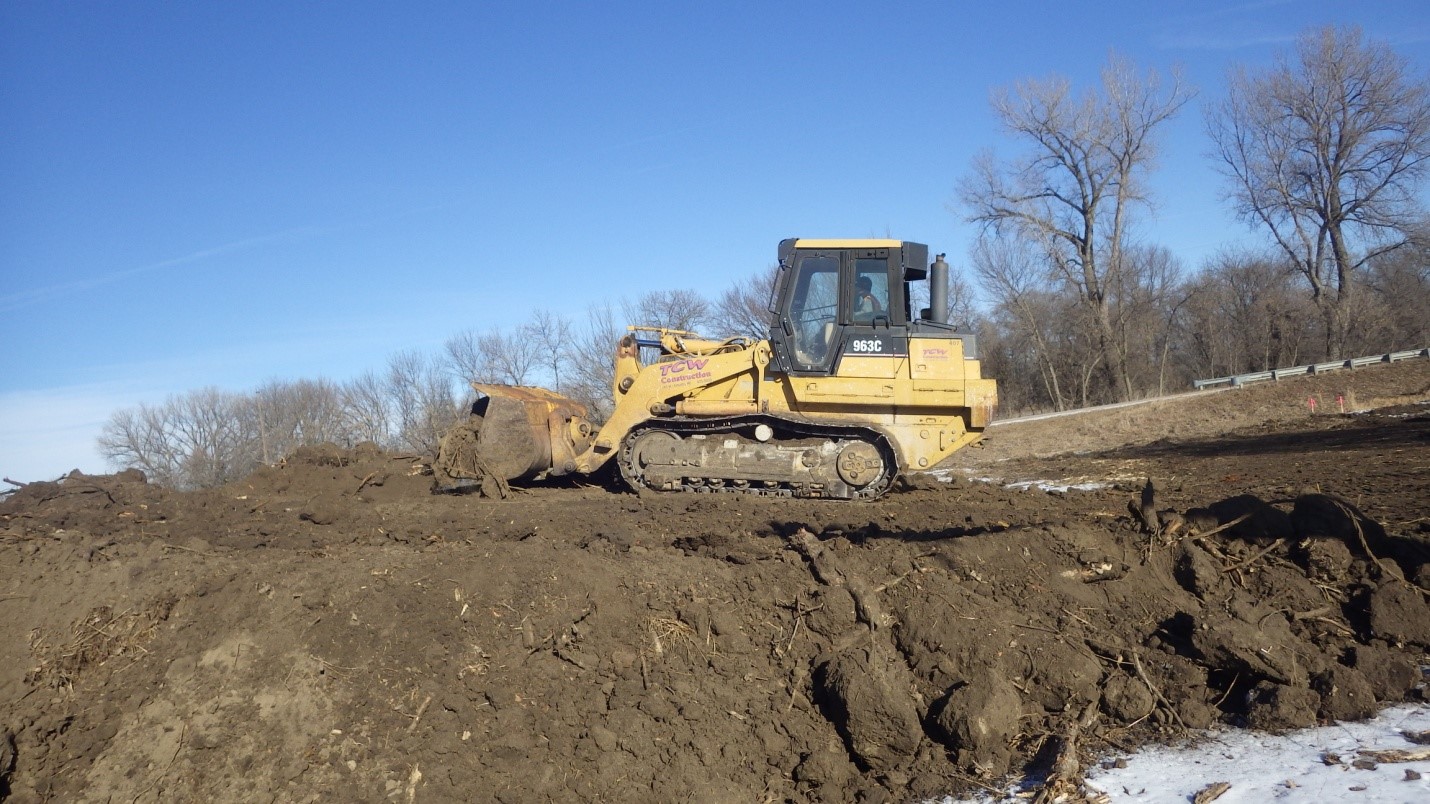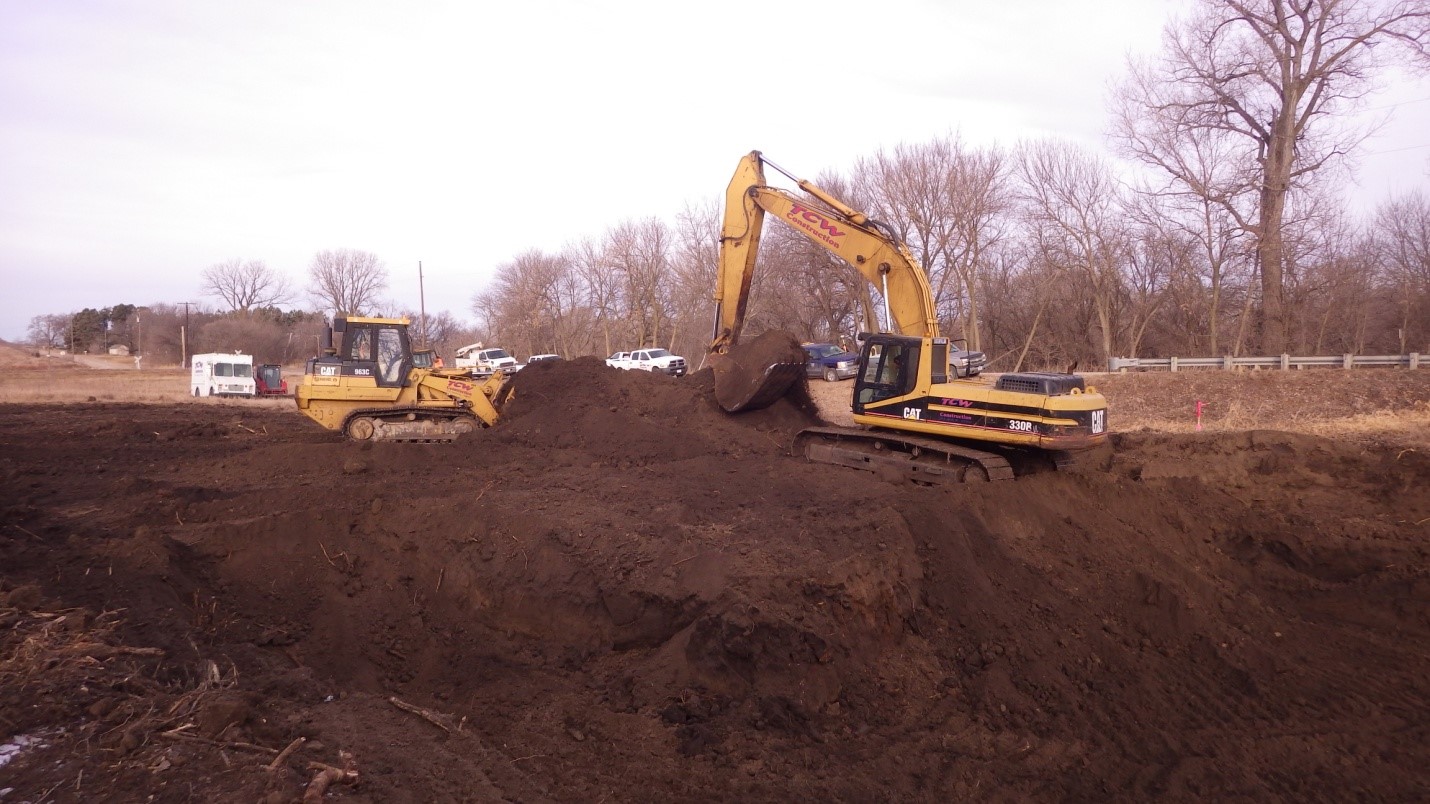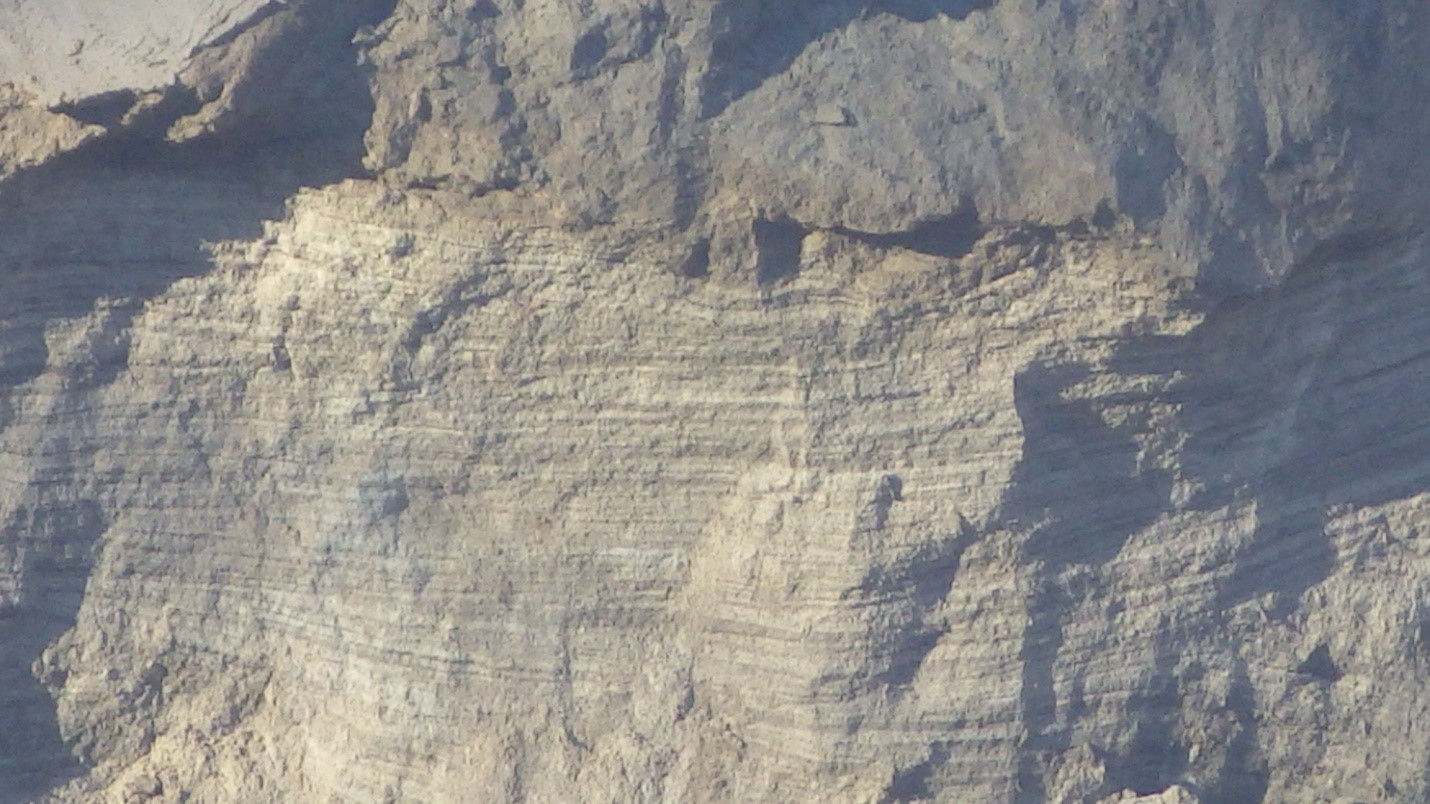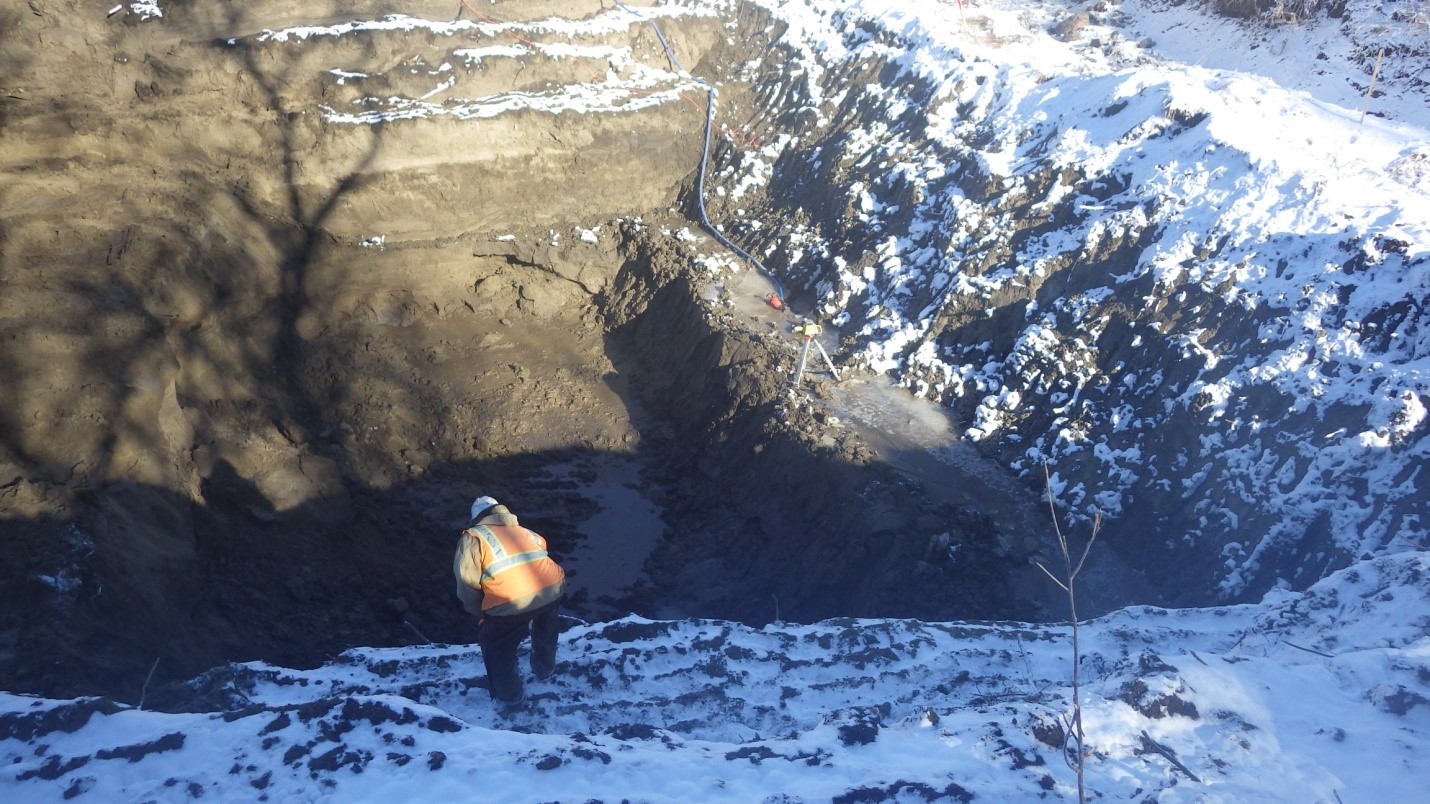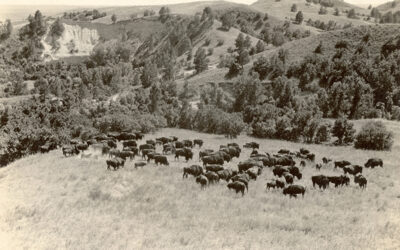These layers of sand in the side of the excavation are evidence of an active floodplain and were likely deposited during individual flood episodes. It was not safe to enter the deepest layer of the pit as it began to fill with water when the target depth was reached.
Johnson did not observe any archeological materials during his time on the project, but the work is ongoing.
Find out more information about History Nebraska archeology.
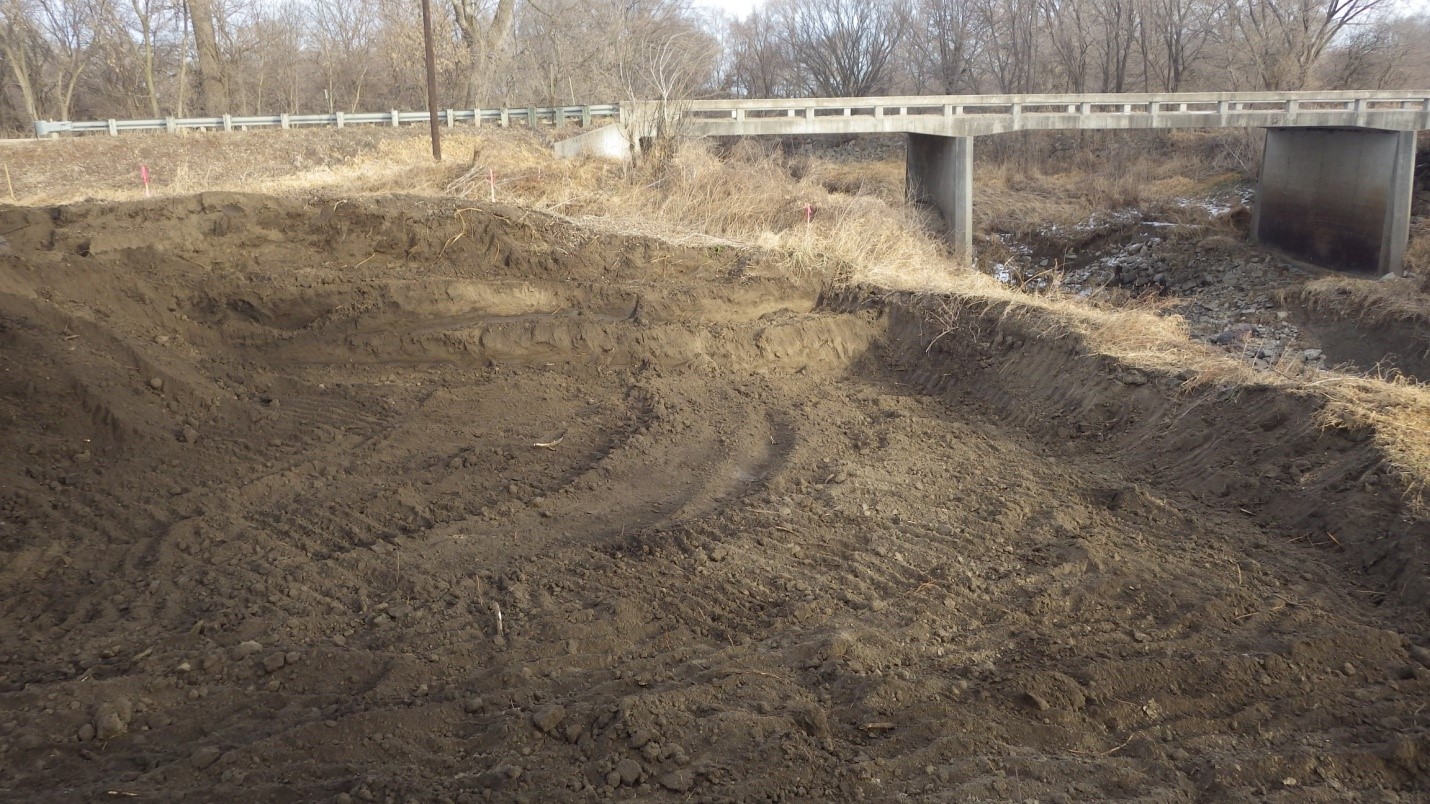
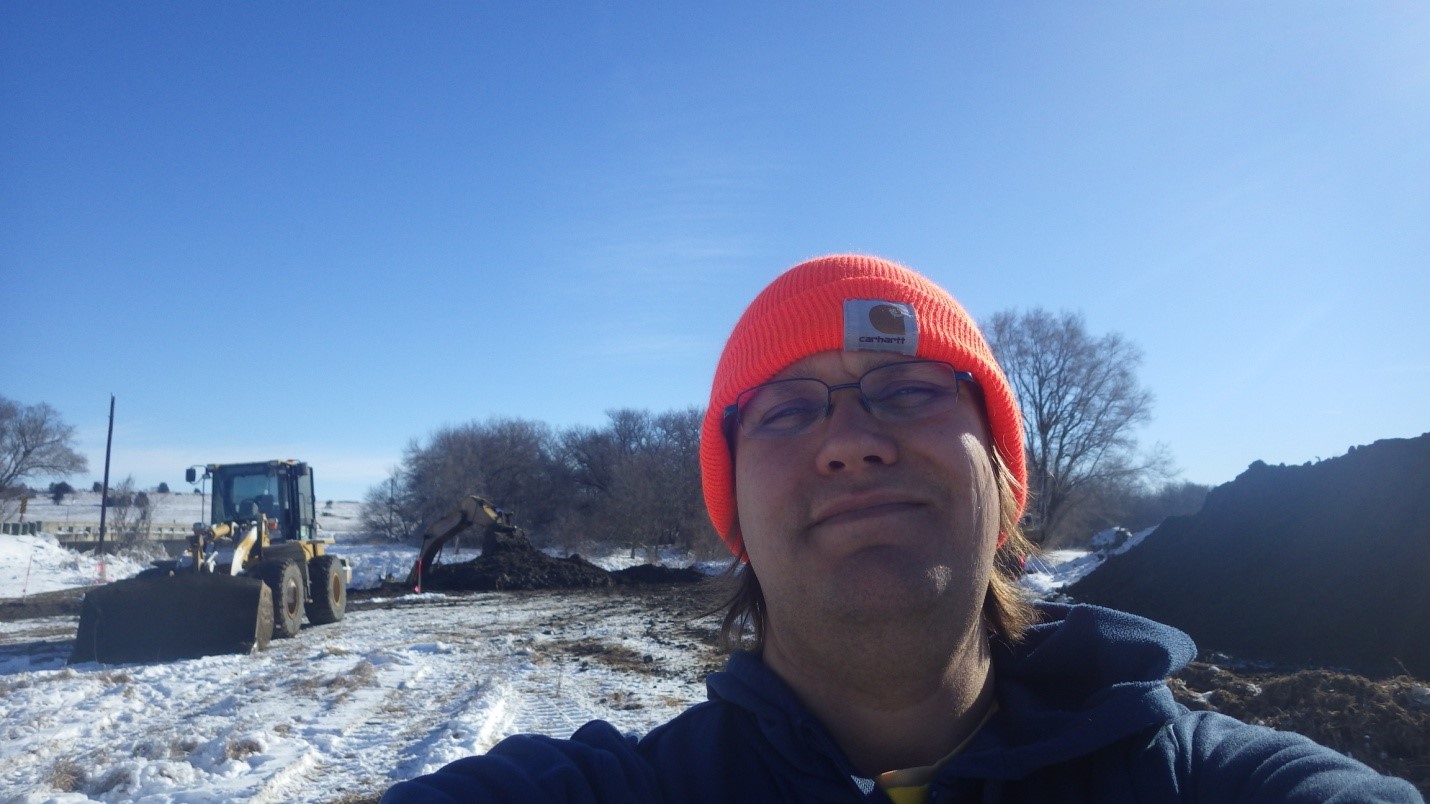
For three days in January, Highway Archeologist Nolan Johnson watched as Nebraska Department of Transportation (NDOT) contractors dug a massive hole near Oak Creek south of Valparaiso.
As part of a NDOT project on Highway 79, an intermittent stream will be moved south of the intersection between Highway 79 and a county road. To accomplish this, two large concrete box culverts connected with an open channel are being built. The total length of the project is over 300 feet and reaches a depth of more than 25 feet in some locations. During consultation with the NDOT, the NSHS archeologist assigned to this project recommended that this location be monitored by an archeologist on staff.
The NSHS and the NDOT have worked together for nearly 60 years to ensure no significant archeological sites are damaged or destroyed during road construction. Monitoring the excavation at Oak Creek is a small part of both agencies’ continued commitment to protecting the archeological heritage of the state. Monitoring allows archeologists to observe soils at depths they could not otherwise reach. The location of the excavation has good potential to contain buried archeological sites based on its position between Oak Creek and the intermittent stream. This potential for buried archeology combined with the very large amount of dirt (over 9000 cubic yards) to be excavated made monitoring at the location the best option to check for archeological resources.
Johnson watched as an excavator, bulldozer, and front-end loader dug into the frozen ground. He examined the dirt as it spilled out of the equipment’s buckets to look for artifacts or other archeological materials. He also went into the hole periodically to look for artifacts on the bottom of the pit. He scraped the sides of the excavation to look for evidence of buried soils or habitation layers.
